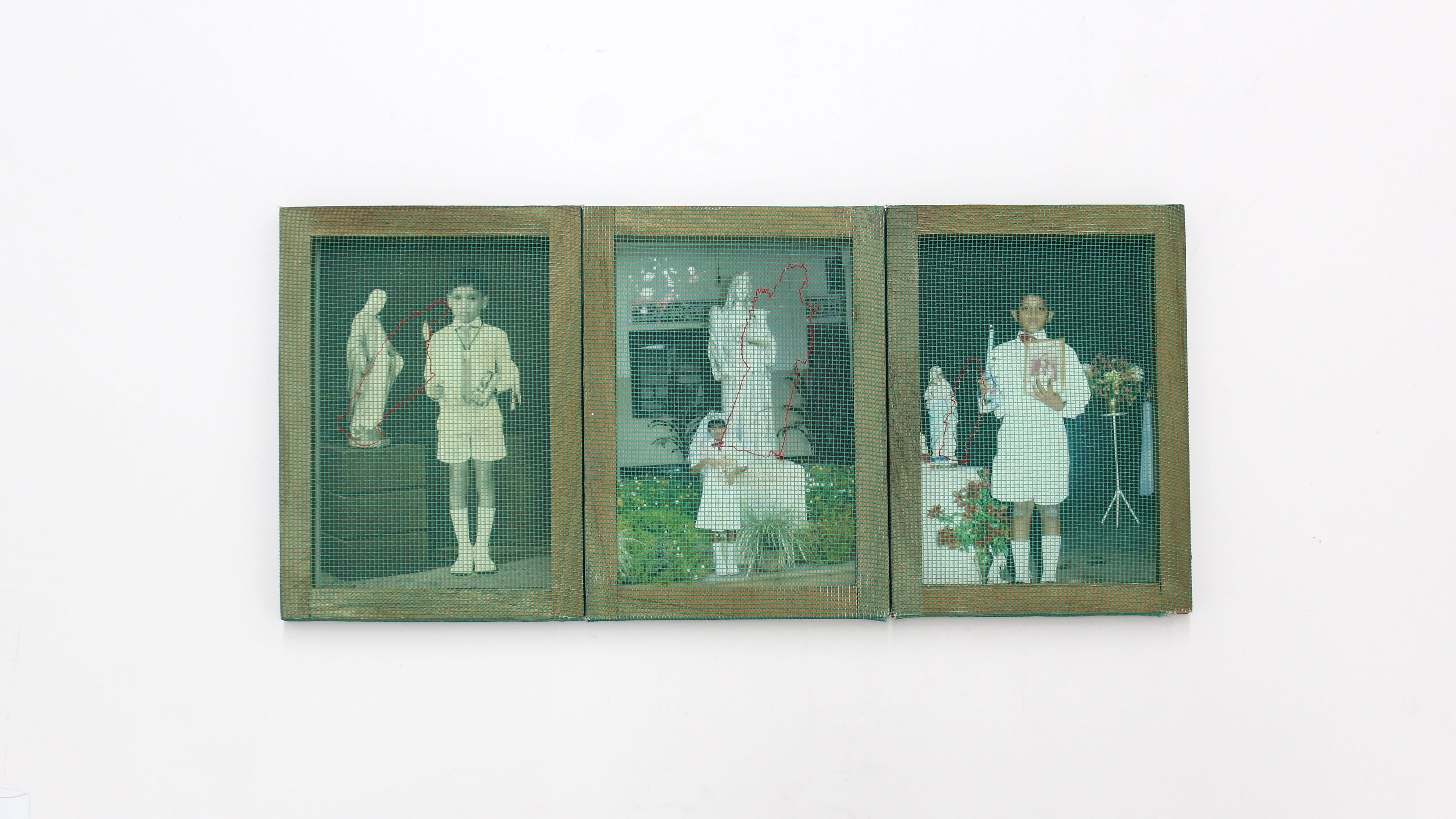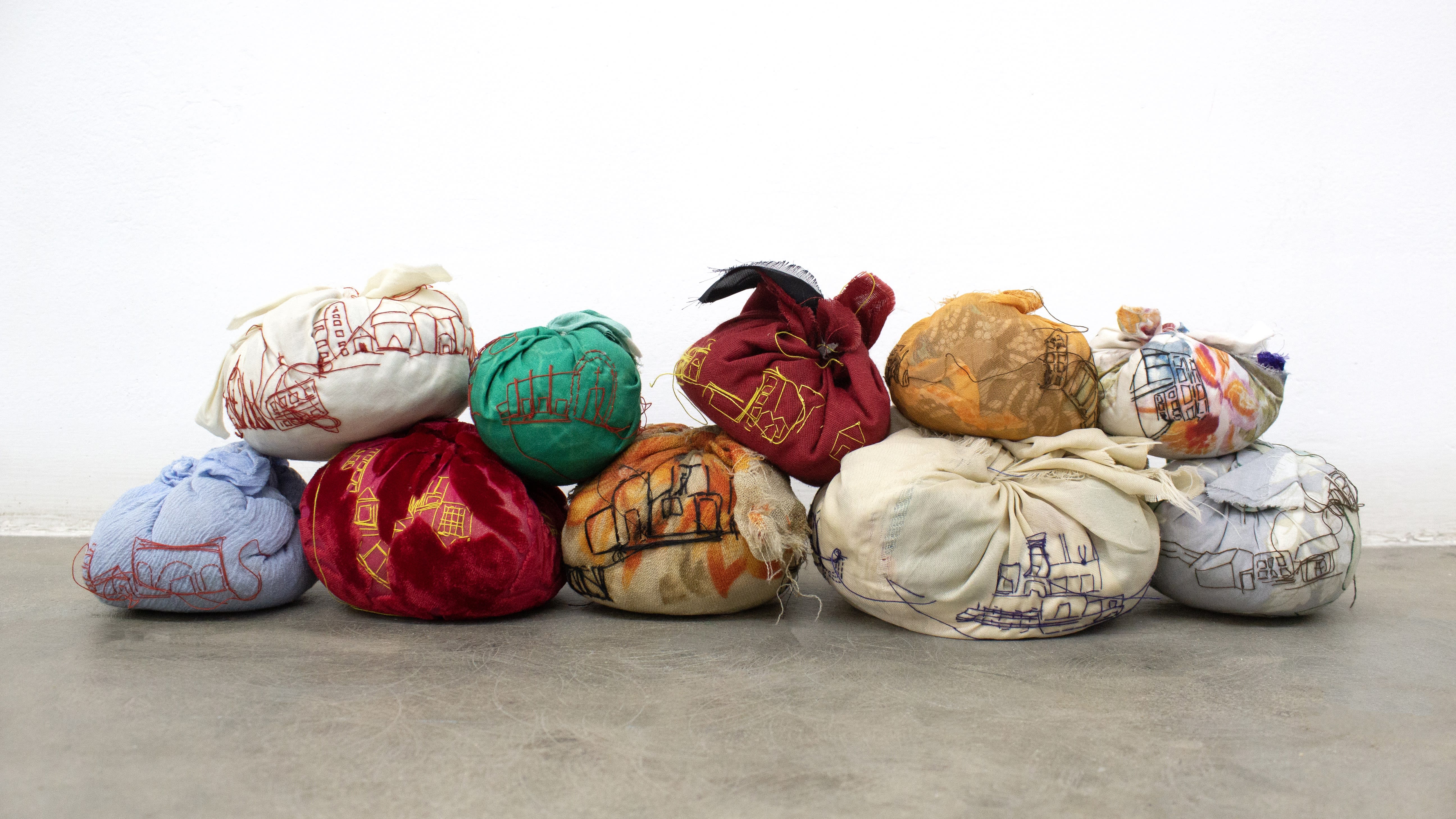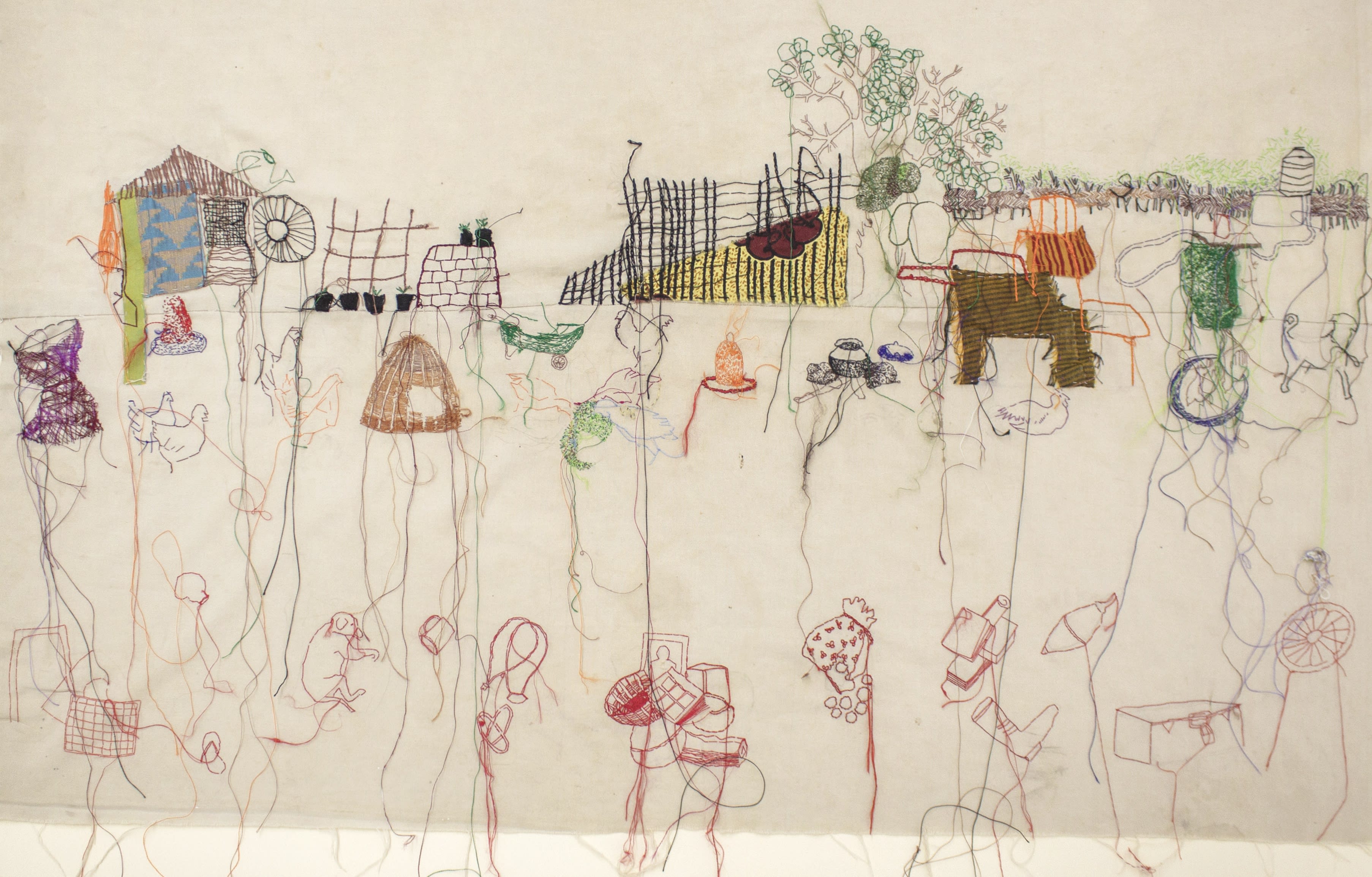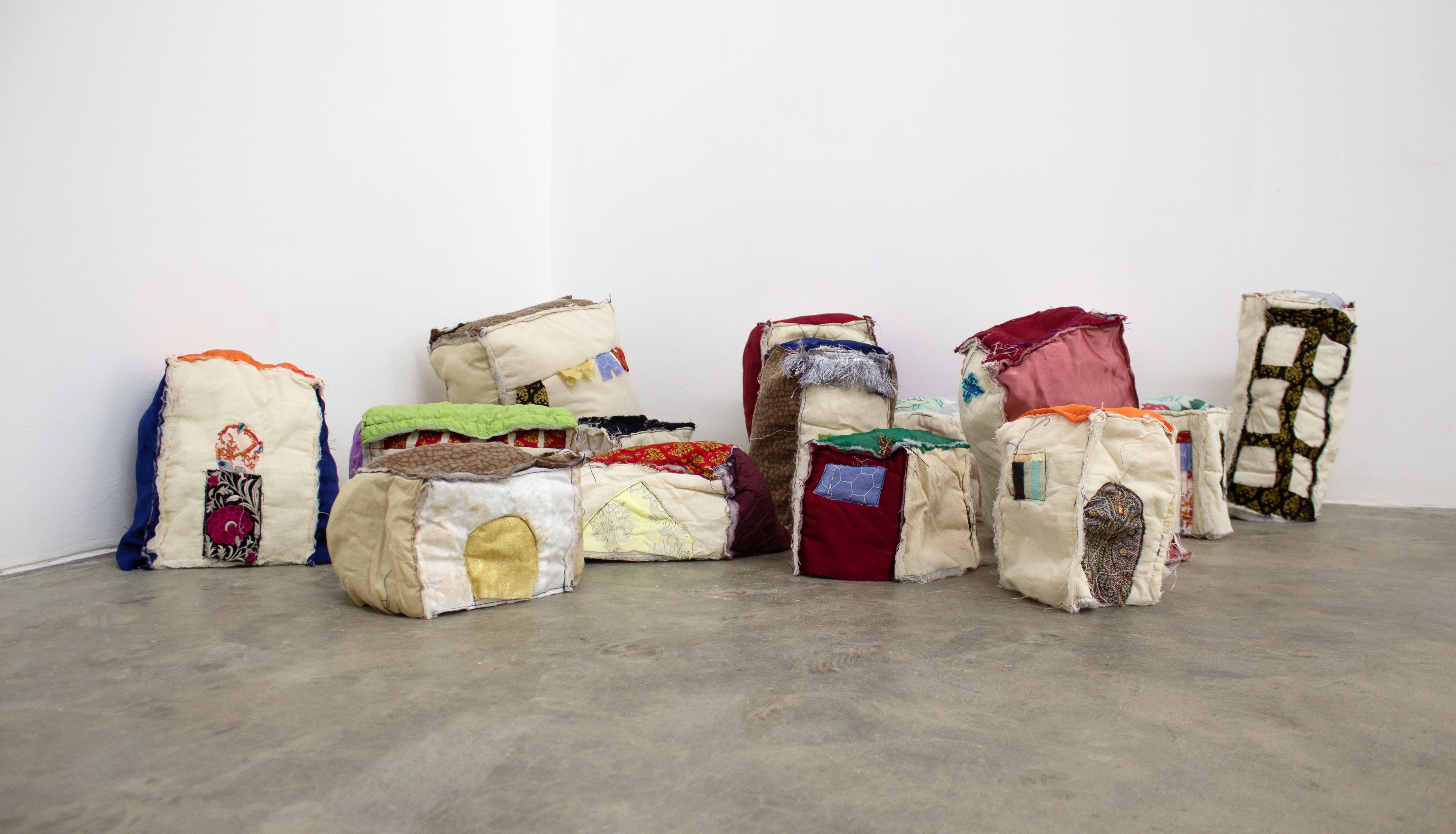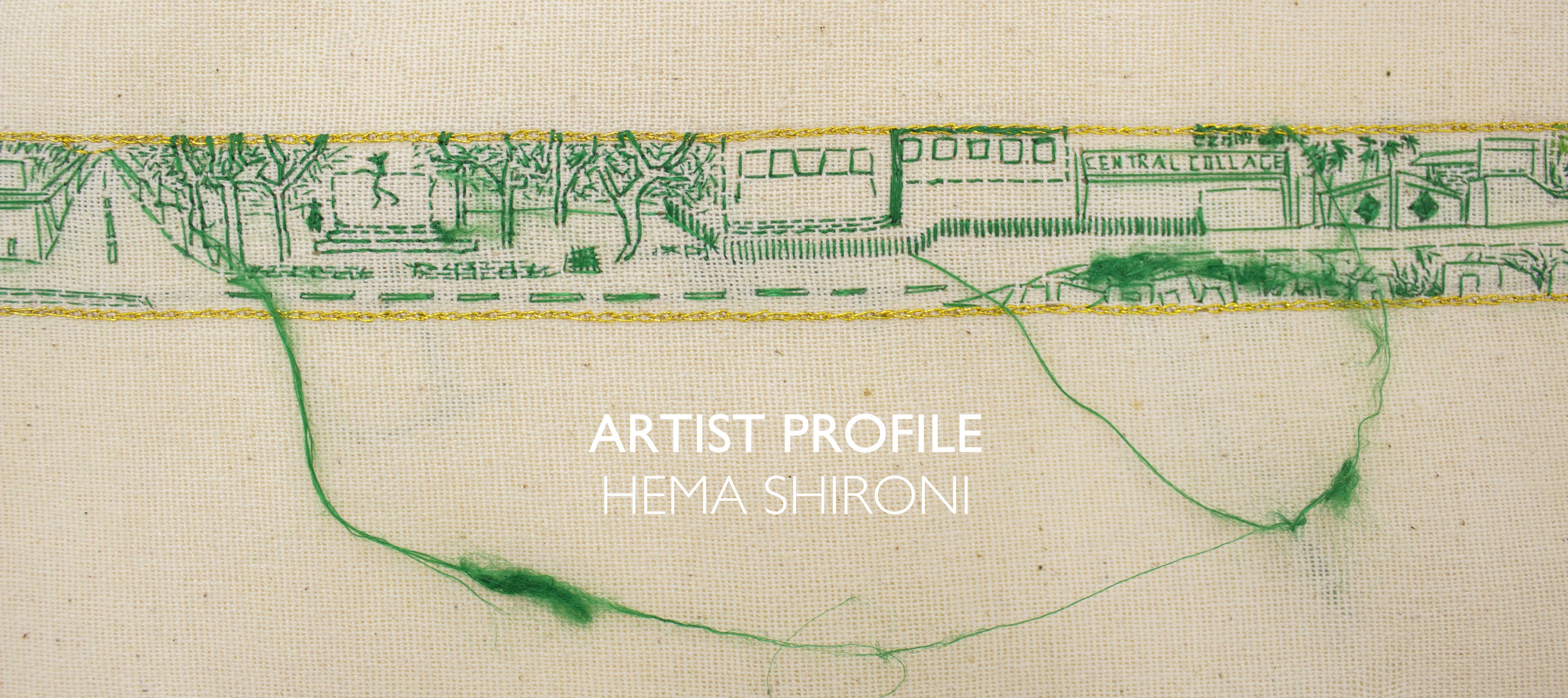 |
Hema Shironi’s wide-ranging artistic practice combines embroidery, mythological imagery, bricolage, and installation to inquire concepts of cultural identity. Her work is deeply rooted in observance of the history of colonization, civil war, displacement and migration, which she highlights through personal stories and experiences of living in Sri Lanka. As a child, her family often moved from one place to another and she eventually found herself questioning the bonds that communities and individuals make. Her work is driven by the nostalgia of the numerous places she has called home and how each community belonging to those places grapples with concerns of language, culture, memory, myth, gender, and equality.
Hema Shironi (b. 1991, Sri Lanka) is a multidisciplinary artist who lives in Killinochchi. She completed her MFA at Beaconhouse National University Lahore in 2019. Her work has been featured at the Critical Zones conceived by ZKM, Centre for Art and Media Karlsruhe (2022, Sri Lanka) and at Colomboscope (2019 and 2022, Sri Lanka). In 2021 she completed an Artist Residency at House of Kal, Colombo. |
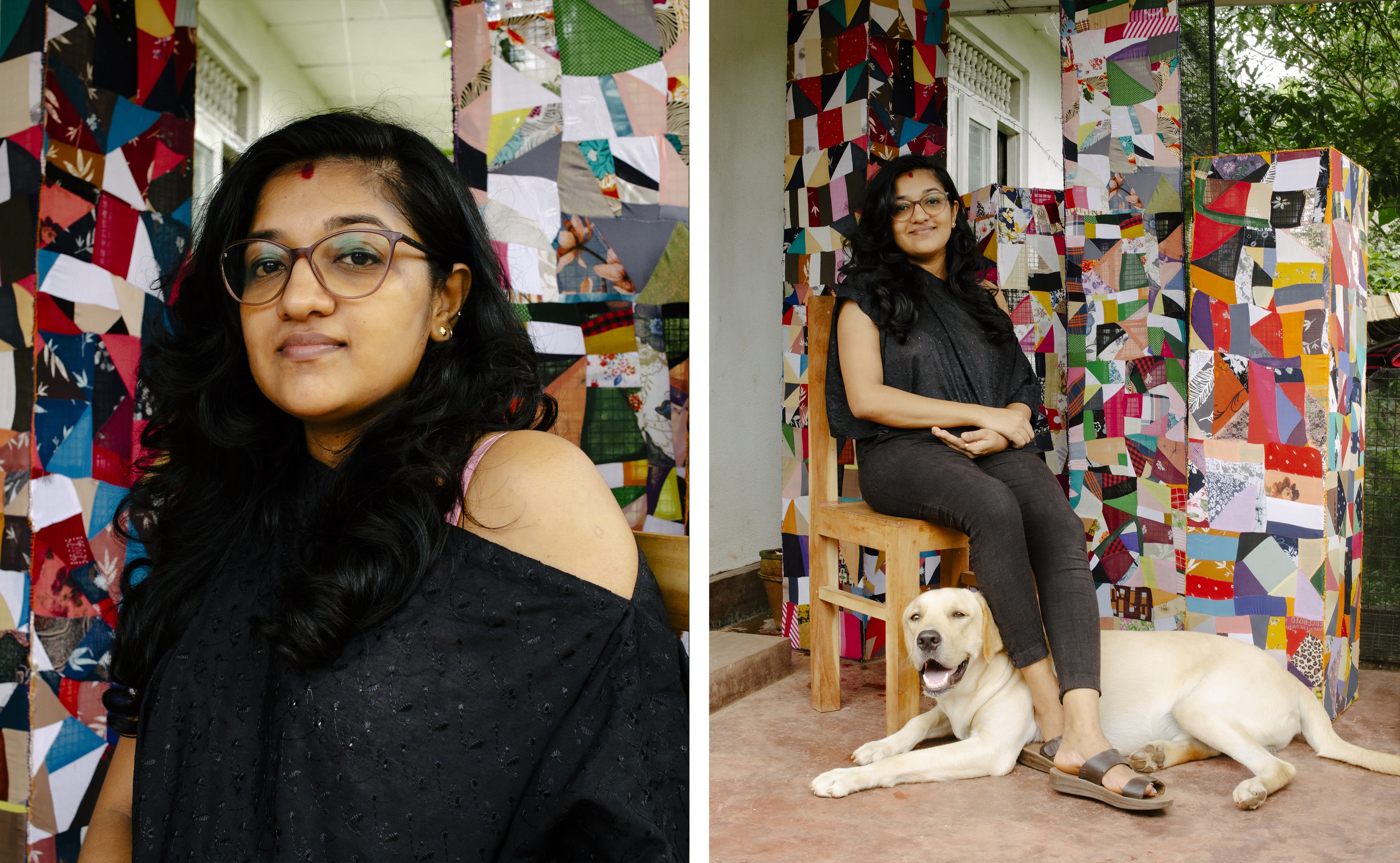 |
| Studio portrait of Hema |
wHAT IS YOUR TYPICAL DAY LIKE?As parents who are both artists, our days may not always follow a strict schedule or remain the same. We wish to create a diverse divine environment for our child. Creating a shared shrine with representations of Buddha, Hindu goddesses, and the Holy Family, we consider incorporating elements from different faiths educationally and respectfully. Spending time cleaning the studio and cooking meals for the day is added to my morning routine. Once I complete them, it makes me feel free and leads me to work at my studio production while maintaining a healthy balance with my family as well. |
|
 |
|
| Hema's studio | |
| |
|
WHAT INSPIRES YOU?My practice is deeply rooted in storytelling, encompassing a wide range of experiences and memories from my childhood to the present. Growing up in the cities of Kandy and Matale, surrounded by mountains, tea plantations, and sacred Buddhist sites, I was exposed to a diverse cultural environment. Coming from a mixed religious background, with my father being Catholic and my mother being Hindu, I learnt to navigate between two traditions, finding inspiration and understanding in both.
My upbringing involved visits to Hindu temples with my grandmother and mother, where I heard religious stories and gained insights into their deep devotion. Simultaneously, attending a Catholic school and engaging with Bible stories shaped my religious experiences. This exposure to different religious practices and narratives has influenced my artistic perspective and allowed me to reflect on thoughts without feeling constrained by religious boundaries.
|
|
|
|
|
|
Hema Shironi, Religious Family, 2018, Mixed Media on Wooden Frame, 19 x 38 cm
|
|
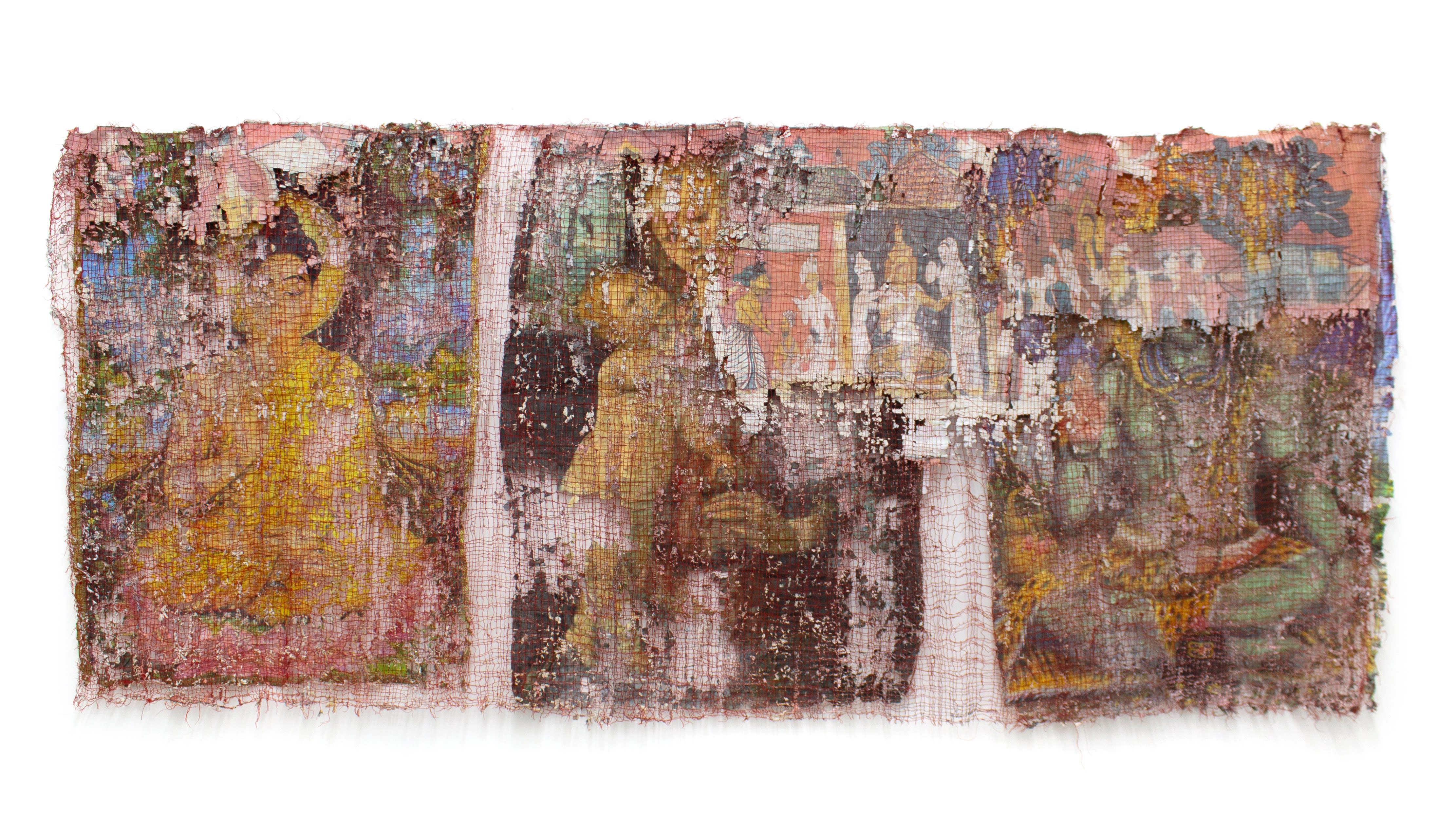 |
|
| Hema Shironi, Mended Fences, 2019, Stitched on Printed Paper, 107 x 244 cm | |
|
|
|
|
Experiences and observations of the post-war situation in Sri Lanka have deeply influenced my practice. The changing landscape, with its juxtaposition of destruction and rebuilding, carries immense symbolism and emotional weight. It represents resilience, hope, and the enduring spirit of the people who have lived through challenging times. The scars of the past serve as a reminder of the collective history and the need for healing and reconciliation. As an artist, I seek to capture these complexities and convey them through my work. My work incorporates elements of the changing landscape, architectural structures, personal narratives, and symbolic imagery. My practice reflects on the impact of conflict and the process of rebuilding.
The linguistic divide between my mother tongue, Tamil, and the national language, Sinhala, also plays a role in shaping my artistic perspective. As two major ethnic communities in Sri Lanka, the differences in language have often created divisions. However, my experiences in various cities has allowed me to accept and embrace myself differently I regards to these languages. The presence of both languages in my life has been both empowering and challenging, as it reflects multilingual identity and evokes discussions about cultural diversity and communication. |
|
|
|
|
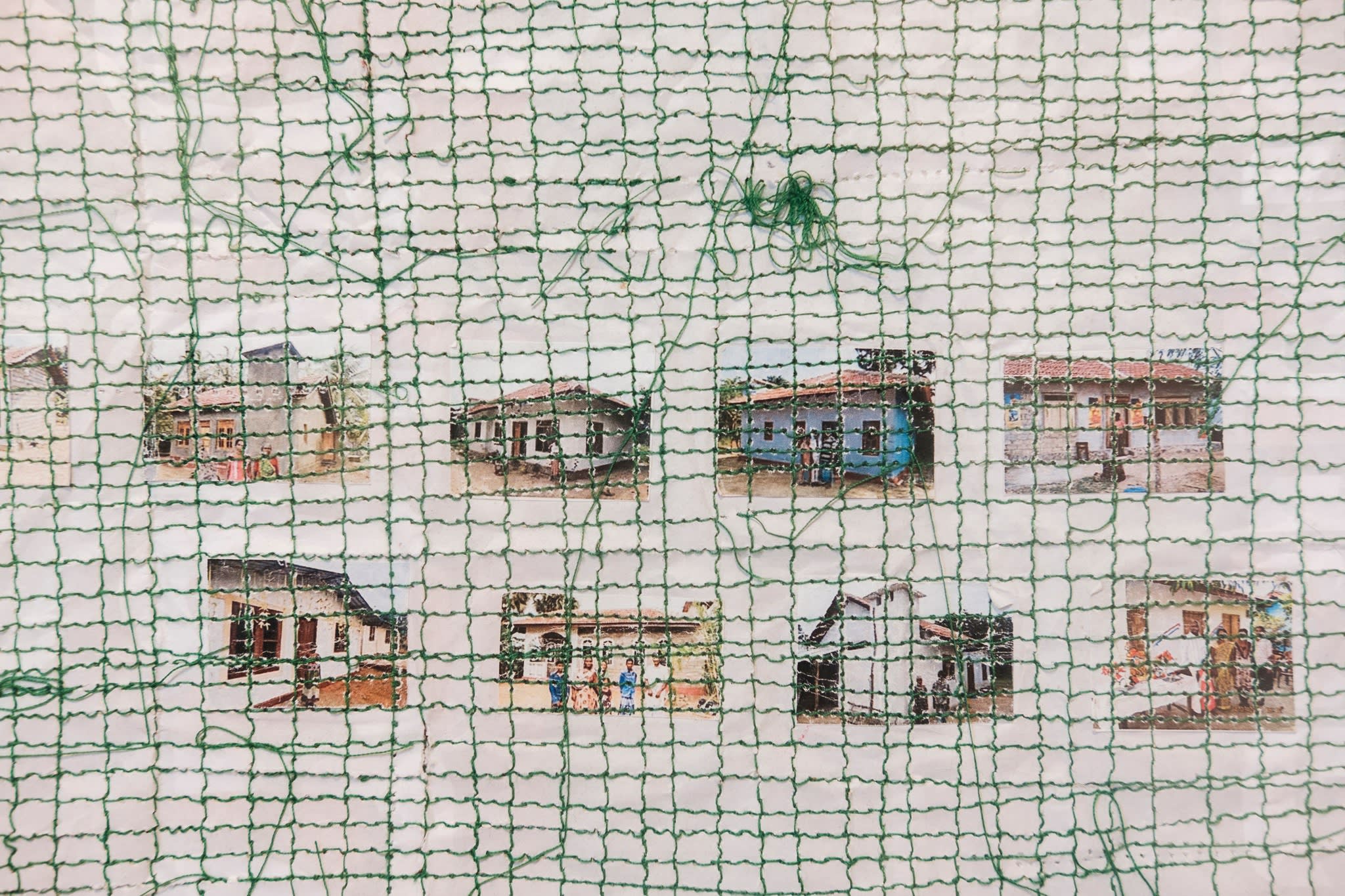 |
|
|
Hema Shironi, They Netted Us (detail), 2021, Stitched on Poster Paper, 60cm x 168cm
|
|
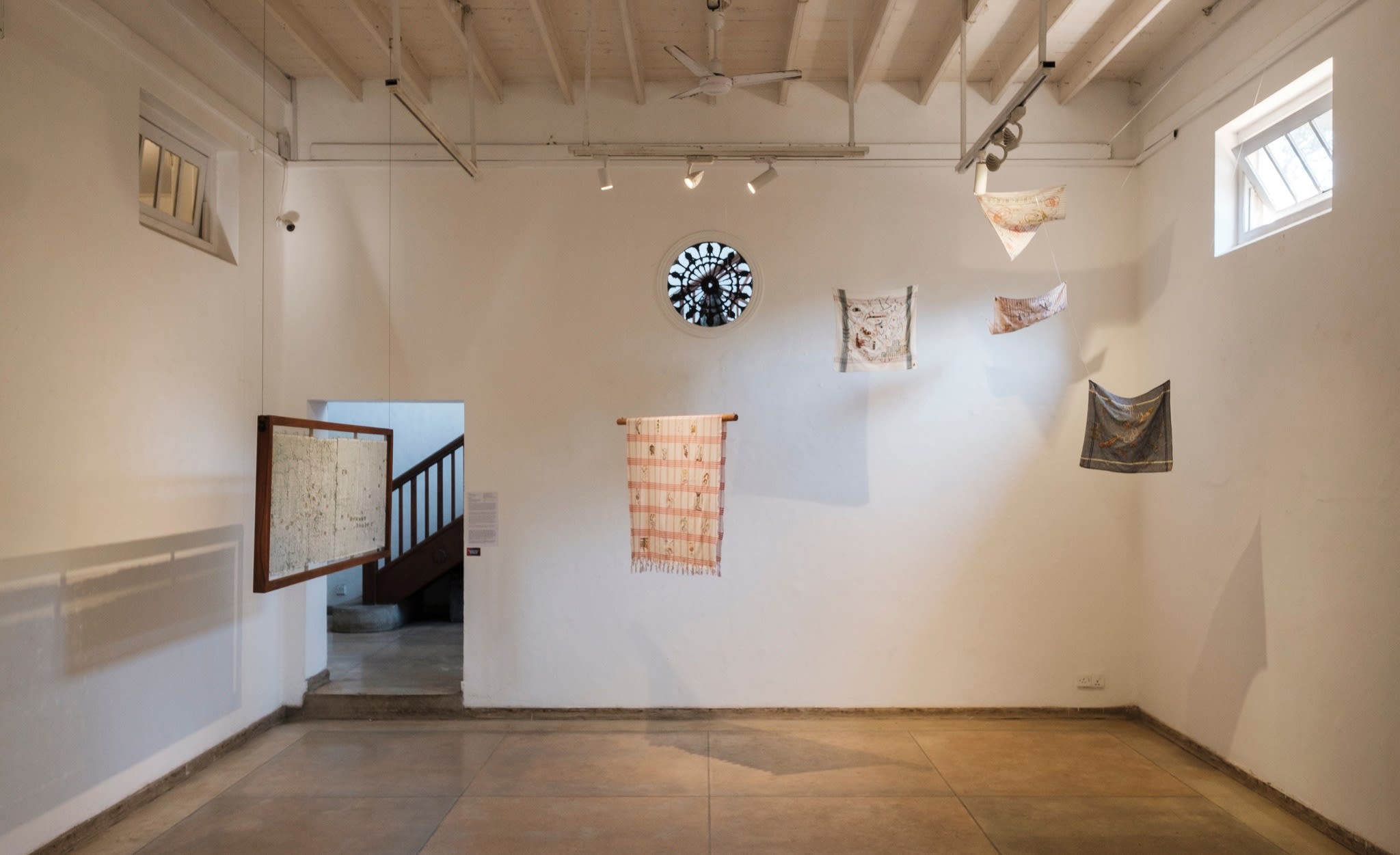 |
|
|
They Netted Us (far left) in Colomboscope: Language is Migrant, Barefoot Gallery, Colombo, Sri Lanka, 2021
|
|
|
|
|
|
|
 |
|
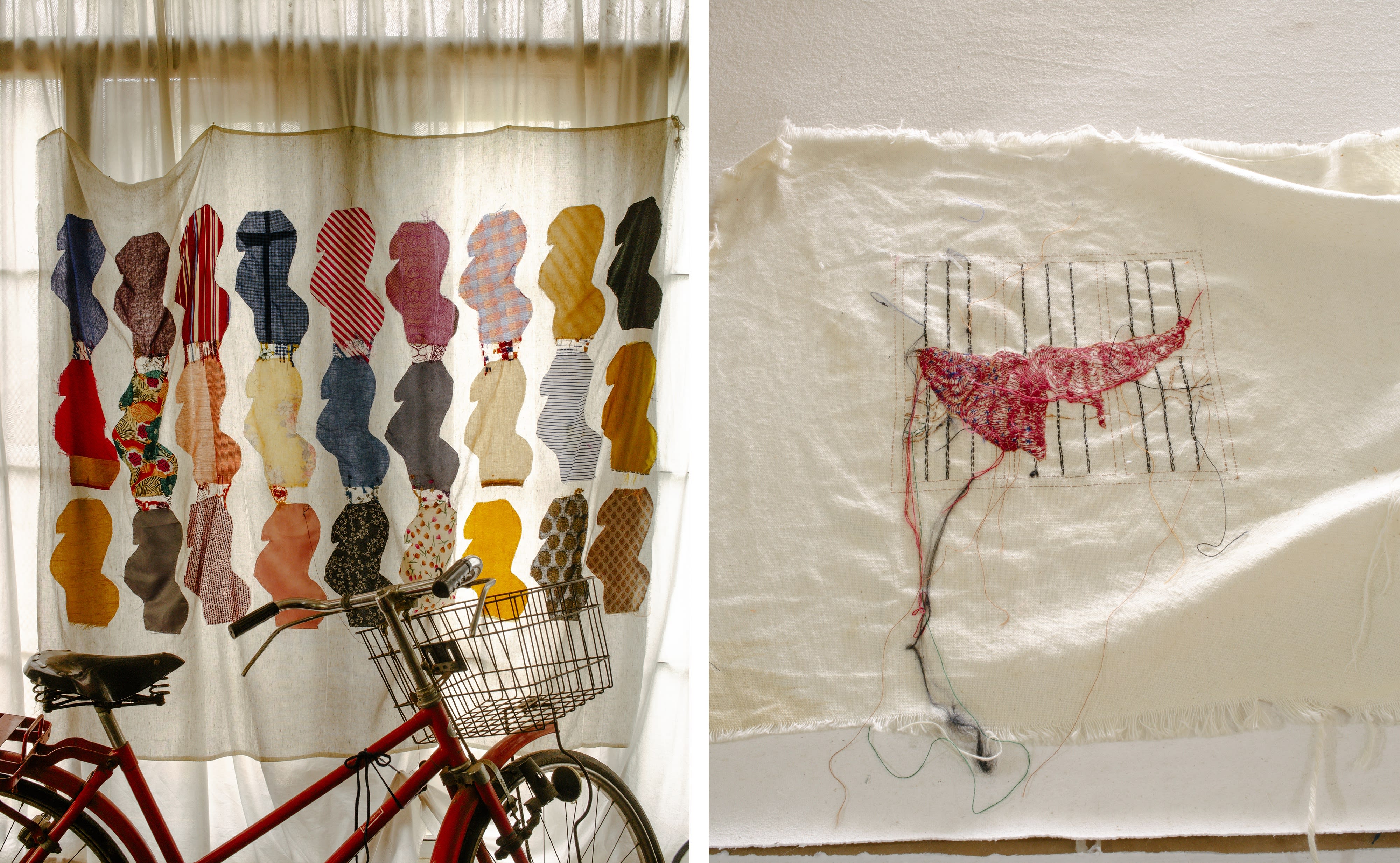 |
|
| Hema's studio |
|
|
|
|
|
| Louise Bourgeois, Ode à l'Oubli (Ode to Forgetting), 2004, Fabric and color lithograph book, 27 x 34cm (each) | |
 |
|
|
Ruby Chishti, We leave, We Never Leave, We Return Endlessly, 2017, Recycled textile, wire mesh, thread, wood and archival glue
|
|
Could you describe how studying at the University of Jaffna shaped your art practice?Firstly, I was a stranger to Jaffna. However, being in a new environment allowed me to observe and experience things through a different lens—the unique features, colors, textures, and atmosphere of the landscape offers diverse perspectives.It was traditional academic technique that I learned there. Basically, drawing, painting, photography, designs, and many other techniques, but in multiple ways. Once the government announced the end of the war, many southern artists were relocated to the north for teaching purposes which indicated a significant shift in post-war art education. For the first and the second year of university, I had the opportunity to study under these artists and incorporate their unique insights into my creative processes, techniques, and approaches to making. It allowed me to witness firsthand how these artists navigate challenges, experiment with different mediums, and develop their artistic ideas. But it didn’t continue...
While it's unfortunate that I didn't have the same opportunity for such interactions during my senior years, the University did offer many different classes. However, I believe I had limited opportunities to explore diverse artistic paths and engage in meaningful dialogue with my teachers. The absence of critique sessions and the one-directional teaching approach made boundaries for the creative productions. When rethinking my earlier studies, it gives me an opportunity for self-reflection and helps me consider what I genuinely want to pursue. |
|
|
|
|
|
|
|
| Hema Shironi, Bundles of Joy, 2020, Fabric and thread | |
 |
|
| Bundles of Joy (2020) in Foreigners, Museum of Modern and Contemporary Art, Sri Lanka, 2023 |
What are some fundamental discoveries you made during your time at BeaconHouse University in Pakistan?The period I experienced during the pandemic was a remarkable time not just for me but for the entire world. The global isolation and restrictions imposed during this time forced everyone to adapt and find new ways of navigating through daily life. Completing my Masters at BNU during this challenging period presented unique obstacles, such as limited materials, unexpected circumstances, virtual gatherings, and online classes. However, these limitations and circumstances pushed me to work with the available mediums in my surroundings, prompting me to explore unconventional materials and repurpose items like leftover cut pieces, old bedsheets, clothes, and other discarded objects from my hostel mates before they left.The phrase "Stay home and stay safe" resonated with me and sparked my contemplation on the meaning of the house. This concept became a focal point in my artistic exploration, and I began to unravel its significance through different mediums. The process involved accidental experiments and unexpected discoveries that steered me in new directions and opened new possibilities for my art.
The partition of India and Pakistan created a profound sense of loss, trauma, and identity struggles for those directly affected by it. People had to adapt to new geographical and cultural surroundings, leaving behind their homes, belongings, and sometimes even their loved ones. The experiences of this tumultuous time found their way into various forms of artistic expression, such as poetry, novels, songs, and visual arts. Mentors like Prof. Salima Hashmi provided invaluable insights, critique, and encouragement, helping me develop skills and refine my artistic voice, encouraging deeper exploration of my chosen medium.
|
|
|
|
|
|
Hema Shironi, The Walking House, 2020, Fabric and thread, 76 x 152 cm |
|
|
|
The Walking House (2020) at Colomboscope: Language is Migrant, Sri Lanka, 2021
|
|
